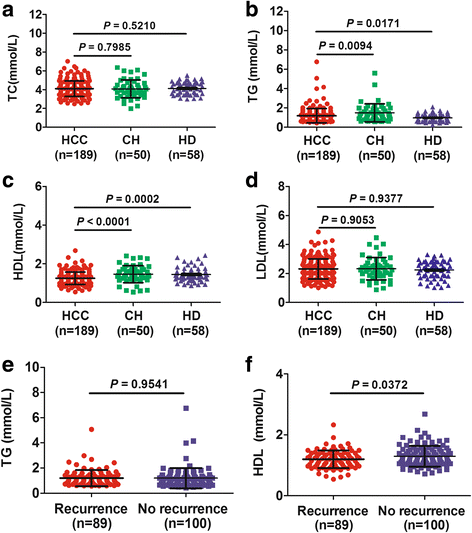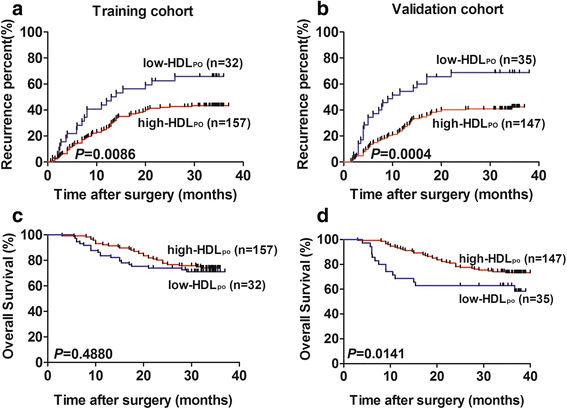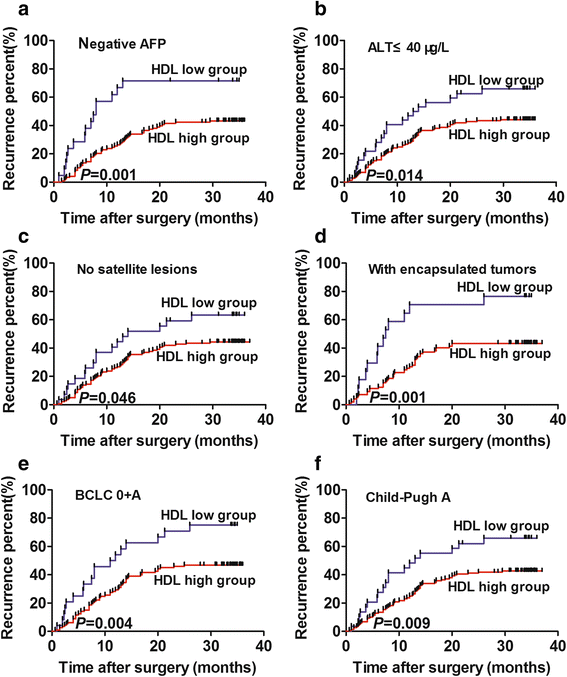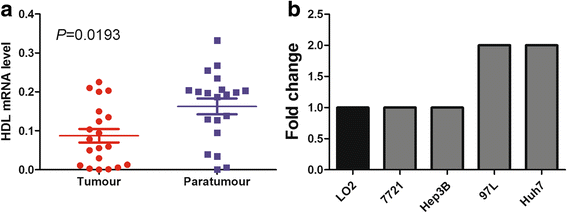A new use for an old index: preoperative high-density lipoprotein predicts recurrence in patients with hepatocellular carcinoma after curative resections
- PMID: 28651644
- PMCID: PMC5485717
- DOI: 10.1186/s12944-017-0509-3
A new use for an old index: preoperative high-density lipoprotein predicts recurrence in patients with hepatocellular carcinoma after curative resections
Abstract
Background: Hepatocellular carcinoma has high incidence and mortality worldwide. Liver is the site of most metabolic biotransformation, which could reflect the status of cells. Most plasma apolipoproteins, endogenous lipids and lipoproteins are synthesized in the liver. Therefore, the effects of lipid metabolites on prognosis of HCC deserved to be explored.
Methods: We prospectively included 58 healthy donors (HD), 50 chronic hepatitis (CH) patients and a training cohort of 189 patients with HCC who underwent curative resections at Zhongshan Hospital from January 2012 to August 2012. We identified the optimal HDLPO cutoff value at 0.98 mmol/L and used it to stratify patients into low- or high-HDLPO groups for the entire cohort and four low-recurrent-risk subgroups. We also included an independent validation group of 182 HCC patients to validate this cutoff value. Prognostic values of HDLPO and other factors were determined by Kaplan-Meier curves and the Cox proportional hazards model.
Results: The low-HDLPO group had a higher median tumor grade (P = 0.020) and a higher recurrence rate (P = 0.032). Results of multivariate analysis showed that preoperative γ-glutamyl transpeptidase (GGT) and HDLPO were independent predictors of recurrence. Moreover, the predictive value of HDLPO was retained in four low-recurrent-risk subgroups. As expected, clinicopathologic characteristics and predictive values were similar in the validation and training cohorts.
Conclusions: HDLPO is an accessible predictor of HCC recurrence after liver resections that can help identify patients who need more careful monitoring and follow-up care.
Keywords: HCC; HDL; Lipid metabolites; Prognosis.
Figures




References
MeSH terms
Substances
Grants and funding
LinkOut - more resources
Full Text Sources
Other Literature Sources
Medical
Research Materials
Miscellaneous

